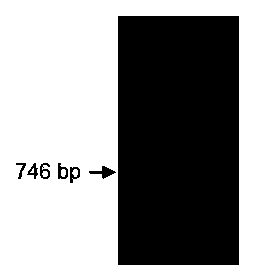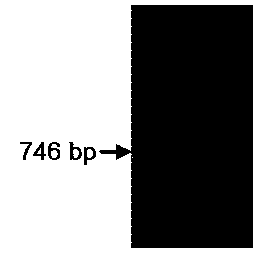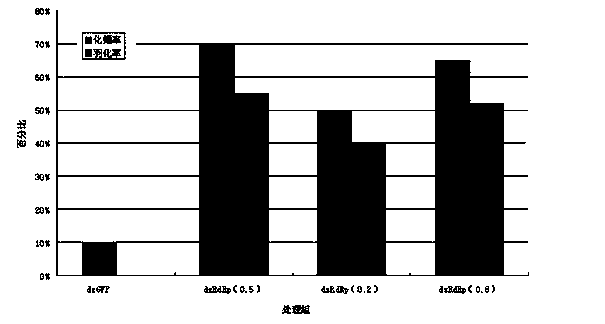Method for controlling CSBV (Chinese bee Sacbrood Virus) by utilizing RNA interference technology
A cystic larvae, RNA interference technology, applied in recombinant DNA technology, DNA/RNA fragments, DNA preparation, etc., to achieve the effect of inhibiting replication, low cost and strong specificity
- Summary
- Abstract
- Description
- Claims
- Application Information
AI Technical Summary
Problems solved by technology
Method used
Image
Examples
Embodiment 1
[0018] Collect larvae or pupae suffering from cystic larvae of Apis mellifera and store them in a -80°C refrigerator.
[0019] Amplification of the RNA-dependent RNA polymerase (RdRp) gene of Chinese sacbrood virus (CSBV) replicator. The total RNA of diseased larvae was extracted by Trizol method, the downstream primers of RdRp gene were used for reverse transcription to synthesize cDNA, and the target gene fragment was amplified by PCR. The gene fragment was connected to the PMD18-T vector, and the positive clones were sent to Huada Gene Company for sequencing.
[0020] Construction of dsRdRp prokaryotic expression vector. Ligate the target fragment amplified in (2) to the L4440 vector under the action of T4 ligase, and ligate overnight at 16°C; transfer the T4 enzyme ligation product into HT115 competent cells, and spread it on the medium containing 100 μg / mL ampicillin Antibiotics on LB solid medium.
[0021] Inducible expression of dsRdRp. Inoculate the positive clones...
PUM
 Login to View More
Login to View More Abstract
Description
Claims
Application Information
 Login to View More
Login to View More - R&D
- Intellectual Property
- Life Sciences
- Materials
- Tech Scout
- Unparalleled Data Quality
- Higher Quality Content
- 60% Fewer Hallucinations
Browse by: Latest US Patents, China's latest patents, Technical Efficacy Thesaurus, Application Domain, Technology Topic, Popular Technical Reports.
© 2025 PatSnap. All rights reserved.Legal|Privacy policy|Modern Slavery Act Transparency Statement|Sitemap|About US| Contact US: help@patsnap.com



